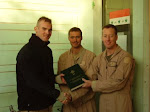Does Traditionis Custodespass Liturgical History 101 ?
Legislation cannot change historical facts. Nor can an act of legal positivism determine what is or is not part of the lex orandi of the Church.

In the brouhaha following the promulgation of the Motu Proprio Traditionis custodes on July 16th we have been treated to a torrent of commentary from the victors that often betrays such a distortion of liturgical history as to be comparable to the most unprincipled secular journalists crowing with their revisionist by-lines on the morning after ‘their’ candidate gains power in whatever election. Let us not now pretend that this is anything other than a political ecclesiastical war, howsoever disturbing that reality may be – even more so given that a liturgical tolerance if not peace had been taking root, growing and bearing fruit in many if not most dioceses, three weeks ago.
Pope Francis has gone back “strongly to what Vatican II said and upheld it”, we have been told. “Some of what Pope Benedict did was contrary to the Second Vatican Council,” it is said. “The entire church” will be “returning to the 1970 Mass,” it is trumpeted. “The 1970 missal” is blithely said “in a sense to be superior, more faithful to the will of the Lord as understood by the Second Vatican Council.” “Active participation” in the liturgy and the liturgy of Vatican II “are synonymous,” it is asserted. We are to be relieved that corrupt “medieval” elements of the liturgy have been discarded once and for all.
So, too, the very first article of the Motu Proprio itself, which seeks to establish the modern liturgical books as the “unique expression of the lex orandi of the Roman rite”, betrays a fundamentally defective understanding of the history of the liturgy, of the relationship of the lex orandi and the lex credendi and of the power of those whose ministry in the Church is indeed that of guarding her living Tradition.
Corruption of the liturgy?
A recapitulation of some basics of liturgical history is thus in order.1 Let’s start with the supposed medieval “corruption” of the liturgy – a theory quite fashionable amongst mid-twentieth century liturgists and propagated widely by their doyen, Joseph A. Jungmann, SJ. According to this theory the “pure” liturgy of the early Church was corrupted in the medieval period and overlayed with inappropriate elements. Based on this assumption twentieth-century reformers eagerly sought to remove the illegitimate accretions and to return to the liturgy before it was thus corrupted, which they made available anew through the liturgical reform of St Paul VI.
This theory, sometimes called “antiquarianism”, denigrates all liturgical forms growing up in the life of the Church from the fall of the Roman Empire through to the Renaissance – approximately 1,000 years – denying the possibility that the Holy Spirit could inspire legitimate developments in the liturgy in this period. It is staggering in its arrogance, but truly useful as a political tool. In the end even Paul VI resisted its harshest implications, refusing liturgists’ demands to abolish the Roman canon, the Confiteor, the Orate Fratres, etc. (In practice, one may argue, they were abolished nevertheless by becoming mere options, or by being mal-translated, but that is another issue.)
If Jungmann’s corruption theory was the fundamental error underpinning the work of mid twentieth century reformers, the “new clothes” of the liturgical Emperors of our own times are stitched together with the assumption that active participation in the liturgy and the liturgy of Vatican II (read the liturgical books promulgated by Paul VI) are coterminous. Well, no, they are not.
Read the rest: https://www.catholicworldreport.com/2021/08/06/does-traditionis-custodes-pass-liturgical-history-101/











No comments:
Post a Comment